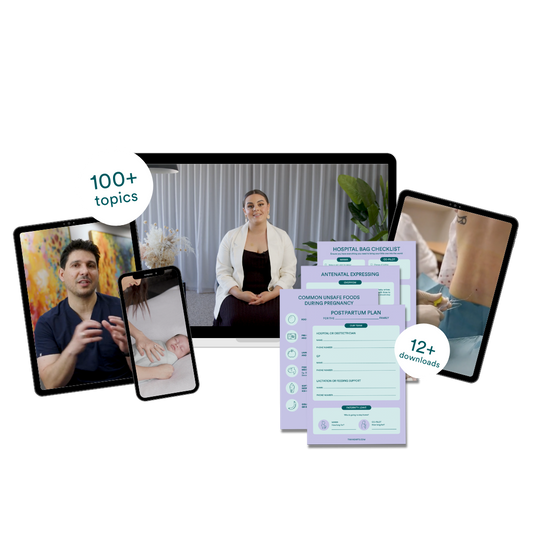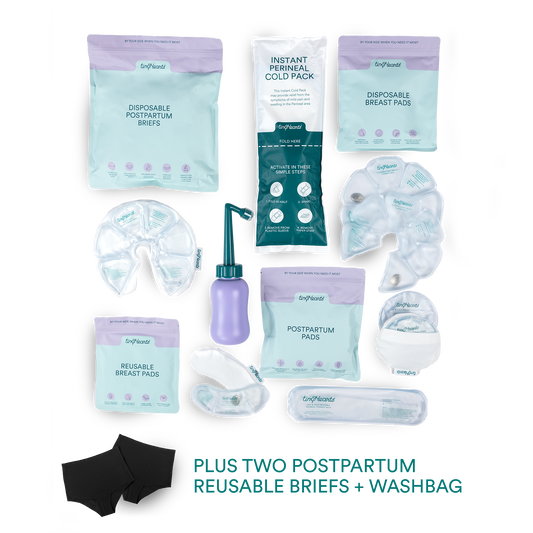I wasn't going to open up about my birth story as it's quite raw and a lot to process. However, after hearing about a lot of women's stories who were not as lucky as we were, suffering the same condition, I've decided to raise awareness around this as it could save a future life. Placental Abruption is when the placenta detaches from the uterus, ending the supply of nutrients, oxygen, and so on to the baby. This has a 1% chance of happening in pregnancy (it can happen at almost any stage).
I had a "normal" pregnancy with my final scan at 20 weeks and nothing to be concerned about. At 39 weeks, contractions began. The pain I felt during labour is indescribable, and I've since learnt that it is a big symptom of PA. I thought my insides were being ripped out slowly, one by one. I had to crawl along the car park floor and the walls into the hospital when we arrived. I was vomiting from the pain. Upon examination, I was only 2cm dilated. We were then advised we could still have up to 24 hours, so we were told to head home. After 2 hours at home, I could no longer continue through the contractions. When we returned to the hospital, we were blessed with 2 amazing midwives who I will forever be in debt for saving both my and Frankie's life. Within less than 2 hours, things progressed very quickly. My waters needed assistance breaking, and I lost around 700ml of blood at the same time. A heart rate monitor was placed on Frankie's head as there was meconium present.

Frankie's heart rate was dropping, and so was mine. We were rushed to the theatre for an emergency C-section, and I was placed under a general anaesthetic. Upon delivery, Frankie required resuscitation and received life-saving CPR. Due to the oxygen loss, a decision was made that she needed to be transferred to a tertiary hospital. The PIPER team from the Royal Children's Hospital determined that Mercy Women's would be the best destination. It was here that Frankie received therapeutic hypothermia for 72 hours. Depending on certain birth/injury criteria, therapeutic hypothermia, or cooling, has been shown to reduce death and disability in many cases. Cooling must commence within 6 hours from birth. It lowers the body's temperature via a blanket or cap to slow the metabolic rate and allow cells more time to recover from neurological damage.

I was separated from Frankie for 48 hours at different hospitals. At the 72-hour cooling mark, she was then "warmed" back to a temperature of 37 degrees Celsius over 12 hours. After this, we were able to hold her for the first time as a family. This was 5 days postpartum. Placental Abruption Babies have a 60% chance of stillbirth and a 25% chance of long-term brain damage. Our miracle girl, Frankie, has the most strength I've ever witnessed.

On day 7, Frankie underwent an MRI which showed two small holes on her brain. This placed her in a Level 1 category for Hypoxic Ischemic Encephalopathy (HIE), a "wait and see" condition. Hypoxic (Lack of Oxygen) Ischemic (Restricting blood flow) Encephalopathy (Affecting the Brain) The impact of each child's injury is different based on multiple factors, including what parts of the brain were affected, how damaging the insult was to the brain, and how each child's brain moves forward from injury through neuroplasticity.


Frankie is nearly two and is absolutely thriving. Prior to birth, I had never heard of a Placental Abruption or HIE. The awareness and message I would like to get out there is that, as women, we need to speak up when it comes to our health. We have a high pain tolerance which can sometimes be shrugged off by health professionals. If you know something is not right, speak up. I knew something was wrong, but I didn't speak up. It scares me to think that I could have been writing a completely different story today. This year we welcomed a second baby girl into our family, promoting Frankie to big sister. It was a healthy pregnancy and a very healing birth for our family.

Read more about labour and birth complications such as placental abruption to learn about the signs and symptoms.
Birth & newborn course
$199
The Bump, Birth & Beyond course will educate you and your co-pilot (support person) on what to expect during pregnancy, birth and the first trimester with your new little love.









